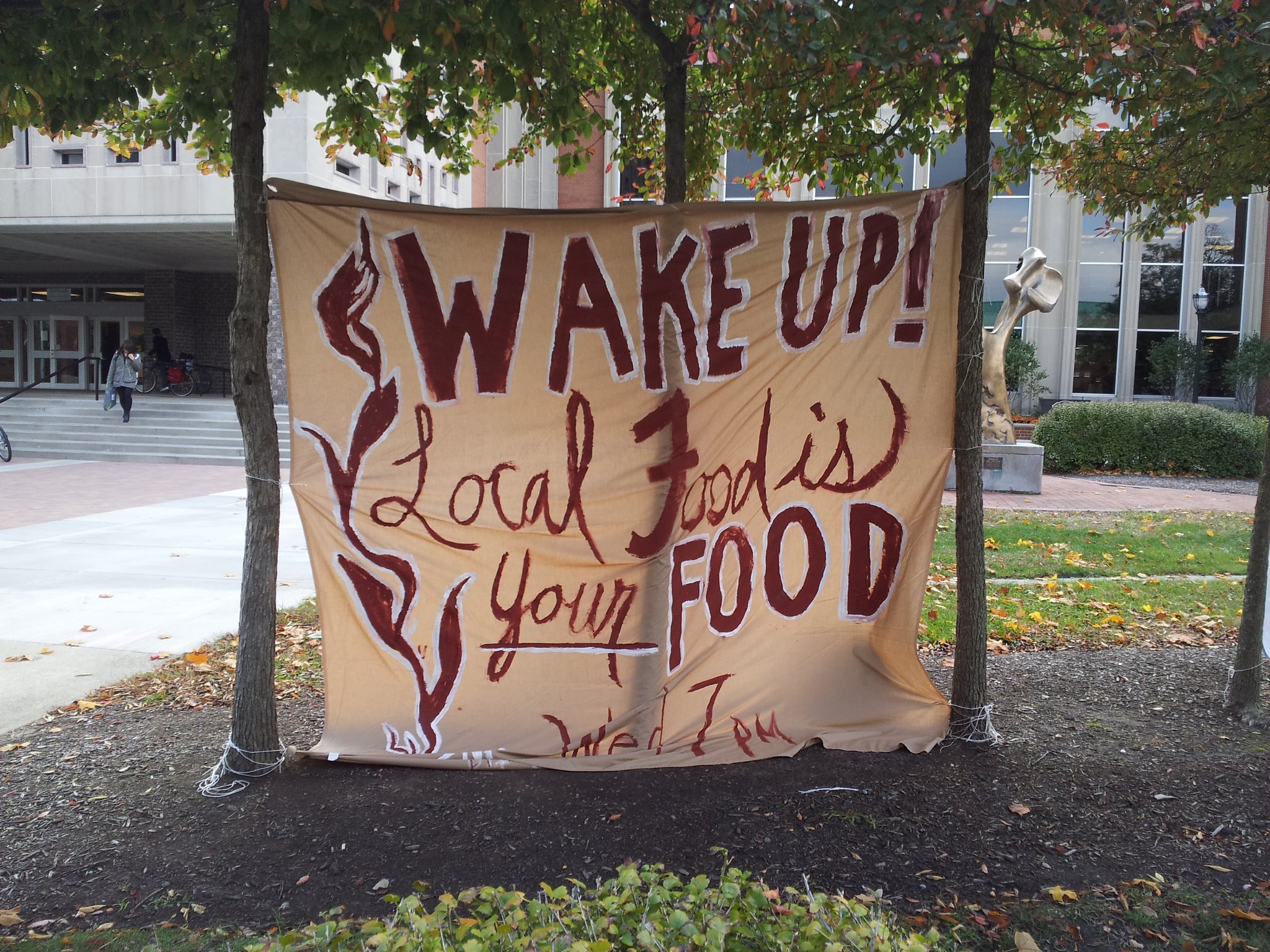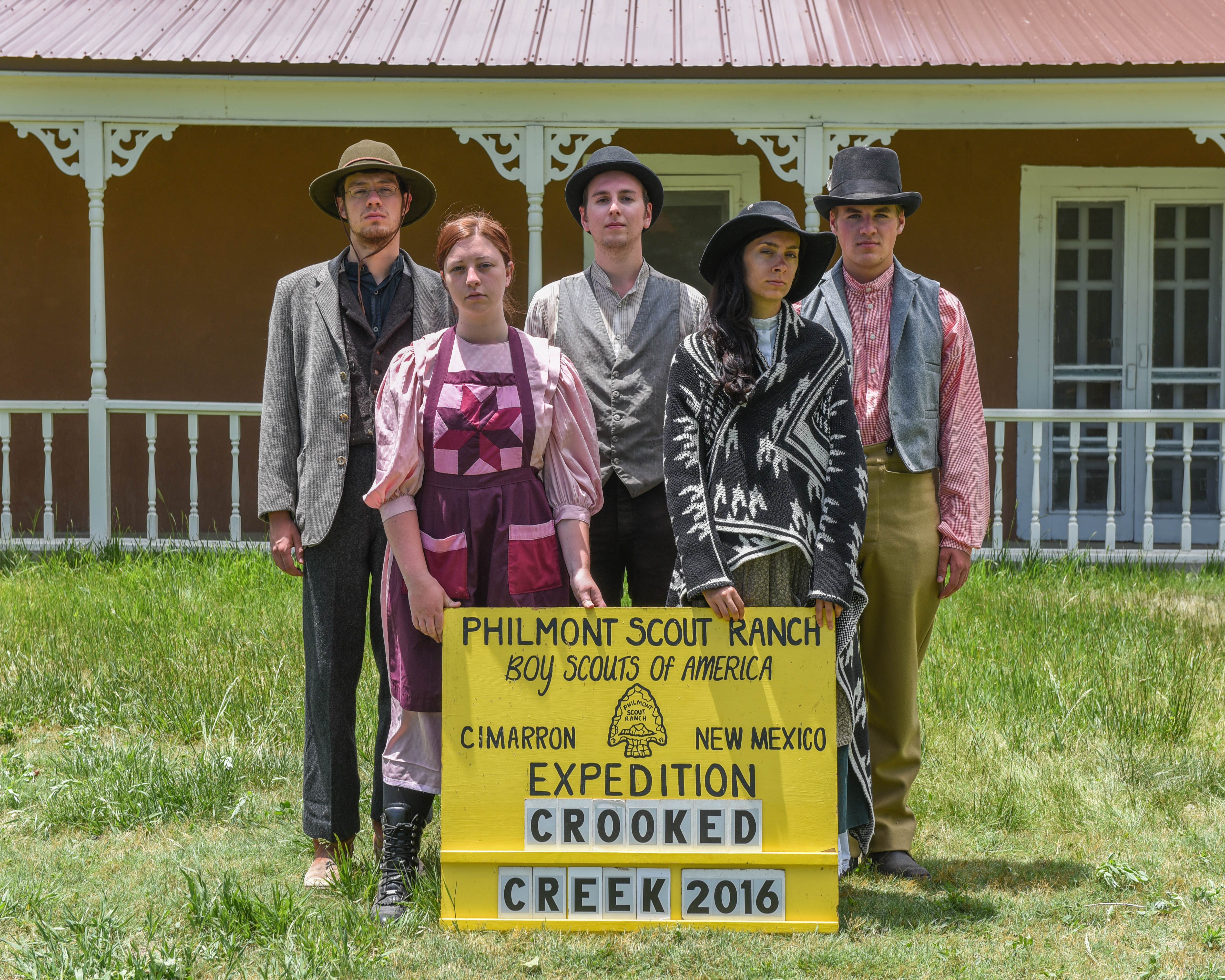Ohio Wesleyan Faculty approved a minor in Food Studies beginning the fall of 2016. The minor is being facilitated by the Health and Human Kinetics Department and Environmental Studies Program. We are calling the new minor a Mentored Minor as the program has a significant amount of engaged work (at least two semesters of internships or independent study)
Details about the Food minor are in the 2016-2017 OWU Catalog, and are listed below. Please contact Dr. Christopher Fink, Dr. Laurie Anderson, or Dr. John Krygier for more information.
Food Studies Mentored Minor
The Food Studies mentored minor is overseen collaboratively by the OWU Department of Health & Human Kinetics and the Environmental Studies Program, and views food from a multidisciplinary perspective. We recognize the importance of food as biological fuel, as a natural resource with problems of abundance and scarcity, as a focus of celebration, as a human obsession, as a cultural expression, as a multi-billion dollar industry, and as an interaction with the global environment through agriculture and waste disposal. By studying food across a range of disciplines, students in this minor will improve their ability to investigate, debate, and solve some of the most important problems affecting the human condition in the 21st century, including food scarcity, malnutrition, obesity, preserving cultural heritage in a global society, and feeding people in a world of 7 billion and more.
Requirements
To complete the mentored minor, a student must:
- Identify an owu faculty member associated with the Food Studies minor to serve as their mentor
- Create A proposal, in collaboration with their mentor, to the food studies faculty contacts, outlining courses and projects that fit with their specific interests in food.
- Complete 5.5 units of coursework, consisting of:
- 3 units of courses selected from the list below, 1 unit from each of 3 different departments.
- The 0.5 unit interdisciplinary Food Seminar (after completion of at least 1 full unit food course)
- 2 project-based units (Independent Study, Directed Readings, Internship).
Courses
The following are the courses that can be used for the 3 non-seminar and non-project courses required in the minor. As a reminder, students must take the 0.5 unit Interdisciplinary Food Seminar (INT 300.6 – Interdisciplinary Food Seminar), and select three other courses, representing three different departments. They must complete at least 1 full unit of coursework from this list before enrolling in the Food Seminar. The Food Seminar will be offered in alternating years.
- BIOL 122 – Organisms and their Environment (Anderson, Downing, Hankison, Johnson, Kelly, Reichard)
- BOMI 103 – Biology of Cultivated Plants (Murray)
- BOMI 106 – Enology (summer only) (Goldstein)
- BOMI 107 – Food (summer only) (Wolverton)
- BOMI 233 – Ecology and the Human Future (Anderson)
- CMLT 110 – Myth, Legend, and Folklore of the European Continent (Merkel)
- ENG 145 – Reading: The Global Kitchen (Comorau)
- GEOG 499 – Sustainability Practicum (Krygier)
- HHK 114 – Personal Health (Fink, Busch)
- HHK 270 – Sport and Exercise Nutrition (Fink, Staff)
- HHK 347 – Special Topics in HHK: A Qualitative Inquiry (Fink)
- HHK 300.8 (0.5 unit) – Health Program Planning (Fink) and HHK 300.9 (0.5 unit) – Health Education Instructional Methods (Fink)
- PHIL 250 – Environmental Ethics (Stone-Mediatore)
- PSYC 262 – Health Psychology (DiLillo)
- SOAN 111 – Cultural Anthropology (Howard, Peoples)
- SOAN 347 – Health, Illness, Disability and Dying (Howard)
- SOAN 367 – Human Ecology (Peoples)
- ZOOL 101 – Human Biology (Kelly)
- ZOOL 325 – Human Physiology (Kelly)
- ZOOL 335 – Ecological and Evolutionary Physiology (Kelly)
Mentors
A current list of mentors can be obtained from the faculty contacts for this minor, Dr. Laurie Anderson (Botany/Microbiology), and Dr. Christopher Fink (Health & Human Kinetics). Faculty mentors will oversee the development of proposals from students, and may also serve as the faculty supervisors of independent studies, directed readings, or apprenticeships.
Food Studies Mentored Minor Faculty Contacts
Dr. Christopher fink (Health & Human kinetics) and Dr. Laurie Anderson (Botany/Microbiology)





 Some Camp sites are “interpretive,” meaning that they are set in a certain time in the history of the region and the staff are dressed in period clothing, portraying people from that particular time and place. For example, there is Miranda, a beaver trapping mountain man camp set in 1838 that features trap demonstrations and blackpowder rifle shooting, rich cabins, a real homestead settled by Austrian immigrants in the Edwardian era with livestock and farm chores. Cypher’s Mine is a 1912 gold mine that gives mine tours, forge demonstrations, and an evening show. Crater Lake is a logging camp set in 1915 where the campers get to climb wooden spar poles. Other sites are set in the present and focus on an activity like those described above. Scout troops on trek often hike through these backcountry camps and participate in the programs. The conservation department, meanwhile, goes back and forth between base camp and the backcountry, working to prevent pollution or overconsumption, suppress excessive erosion, control wildfires, and maintain trails. The conservation team includes roving work crews, environmental educators, two sustainability watch dogs (who keep track of Philmont’s garbology), invasive species specialists, and a GIS team. The ranch department also straddles both areas of Philmont because they care for the animals in base camp but lead the herds of beef cattle through various meadows in the backcountry.
Some Camp sites are “interpretive,” meaning that they are set in a certain time in the history of the region and the staff are dressed in period clothing, portraying people from that particular time and place. For example, there is Miranda, a beaver trapping mountain man camp set in 1838 that features trap demonstrations and blackpowder rifle shooting, rich cabins, a real homestead settled by Austrian immigrants in the Edwardian era with livestock and farm chores. Cypher’s Mine is a 1912 gold mine that gives mine tours, forge demonstrations, and an evening show. Crater Lake is a logging camp set in 1915 where the campers get to climb wooden spar poles. Other sites are set in the present and focus on an activity like those described above. Scout troops on trek often hike through these backcountry camps and participate in the programs. The conservation department, meanwhile, goes back and forth between base camp and the backcountry, working to prevent pollution or overconsumption, suppress excessive erosion, control wildfires, and maintain trails. The conservation team includes roving work crews, environmental educators, two sustainability watch dogs (who keep track of Philmont’s garbology), invasive species specialists, and a GIS team. The ranch department also straddles both areas of Philmont because they care for the animals in base camp but lead the herds of beef cattle through various meadows in the backcountry. This summer, I work as a program counselor at Crooked Creek, an interpretive camp set in 1875. We are a family of three brothers, two sisters, and a family friend from Johnson County, Tennessee. We came to the New Mexico Territory in 1869 after our father, a union sympathizer during the Civil War, was killed by confederate soldiers and our mother died of tuberculosis. My coworkers and I give tours of and maintain our period correct cabin, chop and buck wood would for our stove (we do not have propane), and take care of our cow and calf, two burros, two goats, rooster, two hens and seven adolescent Rhode Island Red chickens, all in period garb! We have a poop flinging contest in the evening, where we clean out the pens, followed by a porch show where we sing mid-19th century folk songs. Because there are no roads near by, we haul our supplies in on the backs of our burros! Poop and burrows! What a summer.
This summer, I work as a program counselor at Crooked Creek, an interpretive camp set in 1875. We are a family of three brothers, two sisters, and a family friend from Johnson County, Tennessee. We came to the New Mexico Territory in 1869 after our father, a union sympathizer during the Civil War, was killed by confederate soldiers and our mother died of tuberculosis. My coworkers and I give tours of and maintain our period correct cabin, chop and buck wood would for our stove (we do not have propane), and take care of our cow and calf, two burros, two goats, rooster, two hens and seven adolescent Rhode Island Red chickens, all in period garb! We have a poop flinging contest in the evening, where we clean out the pens, followed by a porch show where we sing mid-19th century folk songs. Because there are no roads near by, we haul our supplies in on the backs of our burros! Poop and burrows! What a summer.